

Soñar no cuesta nada "joven" [It Costs Nothing to Dream,
Young Man] (Huertas Enterprise, 1968?) Exec
Prod: Johnny Huertas, Herrera de México; Prod: Johnny Huertas, Tony Felton; Dir: Glauco del Mar; Scr:
Eduardo Davidson, Pedro Áviles Herrera; Photo:
Al Nieves, Peter Palian; Music:
Ricardo Rey [sic], Eduardo Davidson; Film
Ed: Al Nieves, Peter Palian, Salim Chadhri, José Antonio Torres
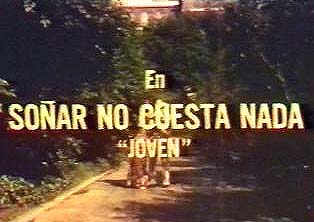
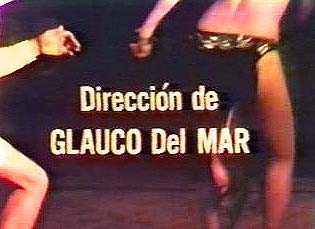
Cast:
Eduardo Davidson (Eduardo, man in cabaret
act; gay man in record store), Pedro Áviles Herrera (Biribab), Perla Mar (?Agustina),
Joseíto Mateo (singer), Johnny
Huertas, Ricardo Rey [sic = Richie Ray] and su Orquesta, Bobby Cruz (singer with band), Eppy Dueño (James, club owner), Carmen Iraida
"La Rebelde," Baby Hi-Fi Colón, Fulsi Taveras, Romero Rochán (cop checking parking meter), Connie
Treviño, Minerva Velez, Hy Farryum, Juan Torres, Miss María Bam Bam, Blanca Treviño, Roseta Camacho,
Gloris García, Elba Maldonado, Zyra Medina, The Latin Brothers, José Valis,
Alexandria Montiel
Notes:
this film, Glauco del Mar's first color film, features a Cantinflas
impersonator, Pedro Áviles Herrera. Áviles Herrera does an excellent job imitating the Mexican comedian,
although he only appears in the traditional Cantinflas costume for a few
seconds in the credits sequence (apparently part of a nightclub act): in the
rest of the movie, he wears a variety of outlandish "mod" costumes,
but his voice, makeup, and mannerisms are clearly modeled after Mario Moreno's
famous character. I have been unable to
find any additional information about Áviles Herrera (who is presumably the
"Herrera de México" credited as co-Executive Producer).
The other mystery about Soñar no cuesta nada, "joven"
is its date of production. I had
originally thought it was shot in the mid-1970s, but have revised my guess to
the late 1960s for the following reasons:
1. Ricardo Ray and Bobby Cruz were
popular salsa performers but around 1974 they both left the music business to
devote themselves to evangelical Christian activities.
2. The song "Mr. Trumpet
Man" heard in Soñar... was a hit
for Ray in 1968 (some sources cite 1966).
3. actress Gloris García also
appears in Glauco del Mar's Love After
Death, released in 1968.
4. actor Eppy Dueño looks much younger in Soñar... than he does in Mataron a Elena (1972) and Ye Yo (1977).
5.a billboard advertises tickets for Dr.
Doolittle at the Loew's State theatre. This film (the Rex Harrison version) premiered in December 1967 at that
movie house. However, since it appears
many exterior scenes were not shot in the winter, it is possible Soñar... was filmed either before
the movie was released (i.e., the summer or fall of 1967) or after it
had been running for some time (spring 1968).
6.The character Biribab refers to the "latest 1967 model"
clothes he's wearing.
[Note: I also think it is possible
the framing story of the movie and the "record store" sequence were
shot later than the "fictional" plot sections, based on the physical
appearance of Pedro Áviles Herrera, who has very bushy sideburns in
these scenes but none elsewhere. This
would also explain the multiple photography and editing credits.]
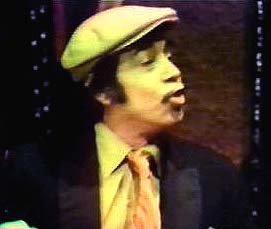
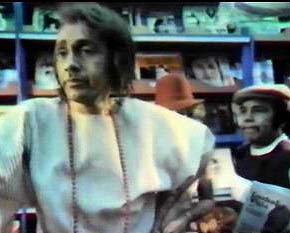
Technically, Soñar no cuesta nada "joven"
is rather rough, but some of this may be attributed to the battered and faded
print used for the DVD transfer by low-budget "Miracle Pictures,"
which released a handful of New York-Puerto Rican features a few years
back.Soñar. . . is paced poorly--there are too many musical interludes,
and even some dialogue scenes are awkward and protracted. This is too bad, because the cast is
generally good and there are some humorous moments. Some of director del Mar's trademarks are
visible here--mirror shots, showgirls--but he doesn't include many of the
extreme closeups of faces which pepper his other movies and there is no nudity
or gore. However, even though Soñar... is a comedy, some of the sexual
elements present in other del Mar pictures show up in a mild fashion: an
attempted rape and a brief joke appearance by a transvestite.
Speaking of the cast, in addition to the
aforementioned Áviles Herrera, the film features various musical performers
(Ray, Cruz, Joseíto Mateo--in a completely extraneous song number--and Carmen
Iraida) as well as the eccentric Eduardo Davidson. Davidson (real name, Claudio Cuza) was born
in Cuba in 1929. After working as a radionovela writer for some time,
Davidson became somewhat famous in 1959 as the creator of the pachanga style of music. He defected to the USA in 1961, and continued
to produce music, dying in 1994. In
addition to Soñar no cuesta nada,
"joven", Davidson contributed additional dialogue to Glauco del
Mar's Toño Bicicleta.In Soñar...,
Davidson has a very long comic sequence as a flamboyantly gay character in a
record store, in addition to a "straight" role in the framing story.
Soñar
no cuesta nada "joven" begins with footage of Biribab riding
through New York on an old-fashioned "high wheel" bicycle. The film then shifts to a skit in a cabaret:
Biri and Eduardo sit at a table with a woman, and Biri boasts he has made a
movie and will tell them about it...
Agustina, María and Conchita are three
sisters who apparently came to New York on a shopping trip and spent all of the
money their wealthy father gave them. They can't pay their hotel bill and (for some reason) owe money to some
gangsters, so Agustina decides to get a job at a nightclub [the "Casa
Borinquen," an actual NYC restaurant]. Coincidentally, Biribab is also hired there, to perform and wash
dishes.
While Agustina is away, two gangsters
enter the hotel room [the real-life "Hotel Americana" is thanked in
the credits], intending to abduct her sisters. One thug starts to fondle one of the young women and, when his partner
objects ("She's for the boss"), knocks out the man.The other sister seizes a pistol and shoots
the lecherous criminal. Agustina returns
but when the second gangster revives, he shoos the three women out of the
room.
After Biribab has an altercation in the
club's kitchen with the Chinese chef, he and club owner James visit Agustina's
dressing room and find her there with her sisters.All are downcast and explain their
dilemma--Biribab and James promise to help. But first, the show must go on! Agustina sings "Cuando, cuando, cuando," then Biribab does a
stand-up comedy routine (referring to President Johnson and the bombing of
Vietnam, another clue to the production date of the movie). An attractive young woman plays the straight
role, claiming she likes Mexican music such as the "jorobada de tu tía"
("your aunt's hunchback" = la
jarabe tapatía), then she and Biribab dance.[One repeated motif in Glauco del Mar's
movies is musical numbers featuring sexy women dancing, as well as
reaction
shots of rapt audience members.]
Returning to the hotel, James, Biribab
and the sisters find no trace of the dead gangster. However, Biribab--leaving the room to call
the police--is captured by the other crook. [At this point the "movie" is interrupted by the framing
story. The other man tells Biribab he
thinks "something is missing" from his tale. This leads to an interpolated sequence--which
has nothing to do with the plot or continuity of the fictional story--featuring
Biribab and a very effeminate man in a record shop. The two men spar verbally:
Davidson: "The only Mexican
thing I like is the tortilla."
Biribab: "Señor o
señorita..."
Davidson: "This isn't a pulquería and they don't sell tequila
here, either."
Biribab tries to purchase a Lucha Villa
record but the gay guy (wearing a long scarf and carrying a flower!) flirts
with the (male) store clerk, then finally locates the album he was searching
for--one by Eduardo Davidson!]
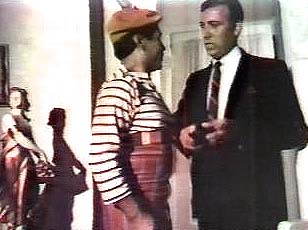
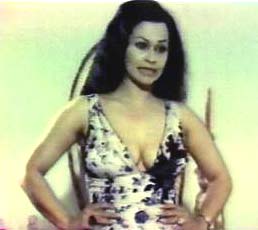
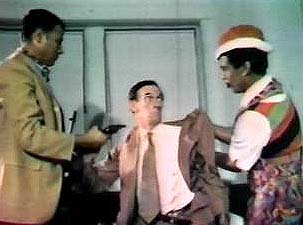
The "movie" plot resumes.Biribab is taken to the hideout of the
gangster boss, Joe. [This performer, a
very skinny guy, speaks English and heavily accented, almost
unintelligible Spanish.] Joe orders
Biribab eliminated but the comedian escapes. [Another irrelevant number follows: as "Mr. Trumpet Man" is
heard on the soundtrack, Biribab--wearing a silver wig!--leads a crowd of
dancing people through the streets of New York, trailed by the original
gangster.] Later, Biribab sees James
kissing Agustina in her dressing room, which makes him sad, since he
loves her.
At the "Teatro Colony," a
charity performance is in progress. After a pair of Apache dancers, Biribab does a comedy bullfight skit
(with a guy in a bull costume). Meanwhile, the gangsters steal the box-office receipts and abduct
the three sisters. But Biribab and James
trail them to the hideout, defeat the crooks, and free Agustina, María and
Conchita.
The scene changes to a beach party,
where Biribab tells the other guests how he defeated the gangsters. James shows up and informs him that the
sisters didn't kill anyone, it was just a trick by the crooks to scare
them. The movie concludes with a reprise
of Rickie Ray and his band (in bathing suits) doing the "Biribab"
song on the beach, then a montage of Biribab scenes from earlier in the film.
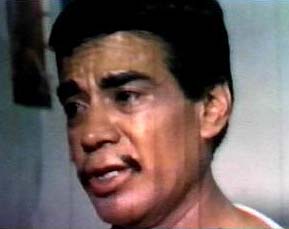
Soñar
no cuesta nada "joven" features some sequences which seem to have
been more or less randomly inserted (particularly the Joseíto Mateos number),
but it's redeemed to an extent by a sincere performance by Pedro Áviles
Herrera, who doesn't just do a Cantinflas imitation, but instead creates a real
character. The other performances are
either very broad, bland, or rather amateurish. On the positive side, the music is good, if repetitive ("El Biribab"
is heard at least three times) and director del Mar directs many scenes effectively
(even if others are rather clumsily done).
This is certainly a curiosity piece but
is not without entertainment value.
Page revised 10 Feb 2022 (to fix html)

